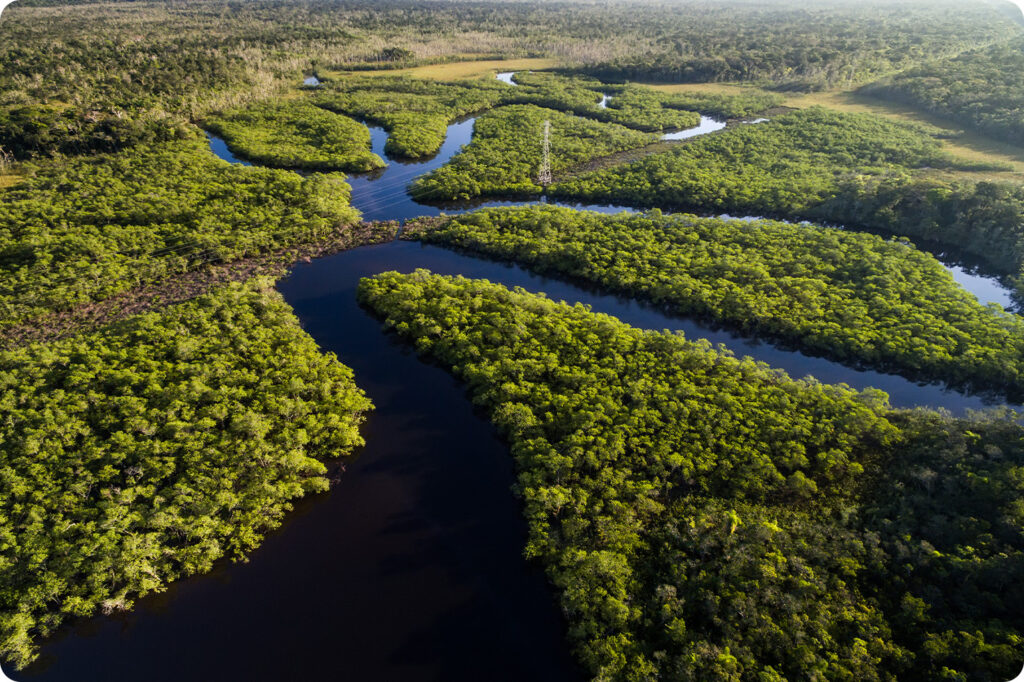The top five climate risk and disclosure stories this week.
Want access to deeper insights and curated climate news? Request a demo of our solution today.
TNFD releases final beta framework

The Taskforce on Nature-related Financial Disclosures (TNFD) has unveiled the final draft of its risk management and reporting framework, marking a significant milestone in its efforts to push companies to adopt integrated climate-nature disclosures.
The framework is designed to embed nature-related risk management within and across organizations and to enable them to report on the financial risks linked to biodiversity loss and ecosystem destruction. It’s based on the same four pillars as the Task Force on Climate-related Financial Disclosures (TCFD) — governance, strategy, risk management, and metrics and targets — and incorporates all 11 of the TCFD’s recommended disclosures. The draft is open for public consultation until June 1 ahead of the publication of the TNFD’s final recommendations in September.
The final draft is the first to describe the framework’s full details, including the TNFD’s recommended approach to disclosure metrics. The taskforce proposes a tiered approach to metrics that is both science-based and practical for organizations.
At the highest level, the TNFD recommends entities report “core global disclosure metrics” that are relevant across sectors and relate to global nature-related policy goals, like those enshrined in the Global Biodiversity Framework, which countries agreed to last year. One level down, “core sector disclosure metrics” are intended to be consistent across businesses within a given sector and empower investors to make like-for-like comparisons of different organizations’ nature-related exposures. Finally, “additional disclosure metrics” allow companies to provide further data on the risks specific to their business models and nature-related issues.
As part of the draft framework launch, the TNFD published guidance to help companies in four sectors get to grips with the framework: agriculture and food; mining and metals; energy; and financial institutions. It also released guidance on reporting information related to four biomes, including tropical forests.
Over 1,000 organizations have joined the TNFD Forum, and 200 organizations are piloting aspects of the draft framework worldwide.
Integrity Council tightens standards for voluntary carbon market

New rules to increase transparency into the voluntary carbon market (VCM) and promote the development of high-quality carbon credits were published on Wednesday by an independent standard-setter.
The Integrity Council for the Voluntary Carbon Market (ICVCM), a UK-based entity set up to produce global standards for carbon credit providers, said its Core Carbon Principles (CCPs) and Program-level Assessment Framework should help carbon market participants identify projects that have a meaningful climate impact.
The VCM has been plagued with allegations that it helps companies exaggerate their climate progress by facilitating credits linked to ineffective projects. In January, the Guardian published an investigation, alleging that more than 90% of the carbon offset projects backed by standard-setter Verra do not represent genuine carbon reductions.
While the CCPs are voluntary, the ICVCM expects that providers will adopt them to demonstrate their credits’ quality to market participants. To be eligible for a CCP assessment, developers have to provide extensive disclosures on how each project evaluates its effectiveness in reducing emissions, as well as other social and environmental impacts. They must also report on how they plan to mitigate any effects on both Indigenous and local communities.
ICVCM Chair Annette Nazareth said the rules represent an “important step towards a transparent, regulated-like market where buyers can easily identify and price carbon credits that meet consistently high-integrity standards.”
Net zero asset owners push oil and gas investment ban

Allianz, Munich Re, CalPERS, and other investors belonging to the Net Zero Asset Owner Alliance (NZAOA) are expected to stop financing new oil and gas infrastructure following the group’s publication of a new position paper.
The United Nations-backed coalition, made up of investors overseeing USD$9trn in assets, published its position on the oil and gas sector on Wednesday. This lays out expectations for member organizations on ensuring their approaches to oil and gas investing are aligned with a “credible and just transition to net-zero emissions by 2050.”
“The world must achieve a net-zero economy by 2050, with a maximum 1.5°C of temperature rise,” said Günther Thallinger, an Allianz board member and the NZAOA’s chair. “This is necessary to avoid the most extreme effects of climate change. How energy is provided and consumed must therefore dramatically change. This includes the need to phase out non-renewable sources like oil and gas in many, if not most, of its current uses.”
While the alliance says members make their own investment and climate target decisions, the position paper “advises” that they not invest in new upstream oil and gas field infrastructure, as well as limit investment in midstream infrastructure to brownfield projects. It also says no financing should be offered to oil-fired power generation infrastructure, unabated new baseload gas-fired power generation, or gas-powered hydrogen facilities that do not have carbon capture utilization and storage.
The position paper calls on oil and gas producers to set science-based climate targets that encompass their absolute greenhouse gas emissions and emissions intensity. These should be aligned with 1.5°C pathways that have been set by credible bodies, including the Intergovernmental Panel on Climate Change and the International Energy Agency.
In addition, the NZAOA asks policymakers to take steps that lower demand for oil and gas and boost clean energy supply — for example by championing carbon pricing mechanisms and ramping up investments in green technologies.
Climate Action 100+ updates net-zero benchmark

A leading investor-led climate initiative has rolled out an updated framework to help financial institutions engage with high-emitting companies on their climate targets and disclosures.
Climate Action 100+’s Net Zero Company Benchmark 2.0 provides investors with a system for evaluating their investees’ climate actions. It uses two types of indicators, the first of which gauges the adequacy of companies’ climate disclosures, and the second of which checks how in line they are with the goals of the Paris Climate Agreement.
On the disclosure front, the new benchmark introduces assessment criteria for companies’ past emissions reductions and the factors that led to them. It also overhauls the indicators focused on decarbonization strategy, capital allocations, climate policy engagement, and a just low-carbon transition.
With respect to climate alignment, the new benchmark adds a more granular scoring system to its assessment of companies’ climate accounting and audit assessments. It also expands the climate policy engagement alignment assessments. Now companies will be graded on a scale from A+ to F for their overall direct and indirect climate lobbying behavior. A new indicator will also track how aligned their climate policy engagements are with the Paris Agreement.
With over 700 investor members representing over USD$68trn in assets, the Climate Action 100+ is one of the largest alliances working to promote better corporate climate change governance. It includes financial heavyweights BlackRock, Fidelity International, and PIMCO.
The initiative came under fire recently when oil giant BP, one of the companies targeted by Climate Action 100+, announced it would water down its emissions reduction target. This brought into question the group’s effectiveness when it comes to promoting strong climate action.
ECB tests central banks’ resilience to climate shocks

European central banks are exposed to climate-related financial risks primarily through their corporate bond portfolios, the results of a recent stress test shows.
On Thursday, the European Central Bank (ECB) published the findings of a 2022 exercise that was designed to gauge the Eurosystem’s sensitivity to climate shocks. The Eurosystem is the network of national central banks that implement monetary policy and oversee the European Union’s financial system with the ECB.
The stress test explored how orderly and disorderly low-carbon transition scenarios would impact the central banks’ corporate bonds, covered bonds, and asset-backed securities. It also tested these portfolios against a flood risk scenario.
The results show the transition and physical climate risks included in these scenarios would have a “material impact” on the banks’ risk profiles. In all three scenarios, the greatest risk is posed by the banks’ corporate bond portfolios, which could become impaired if the companies that issue them see their financial positions erode.
The ECB said it expects to conduct additional climate risk stress tests of the Eurosystem going forward.

